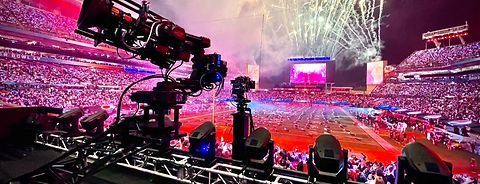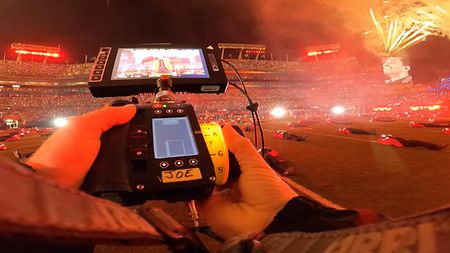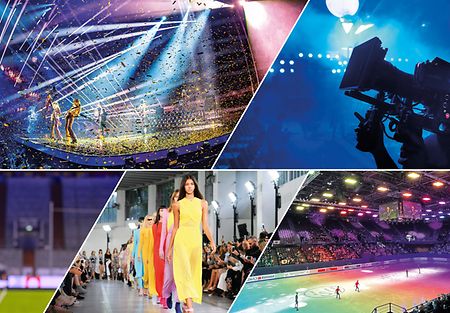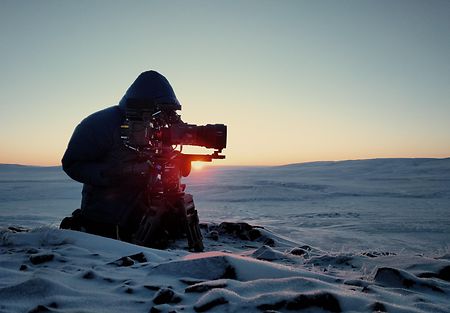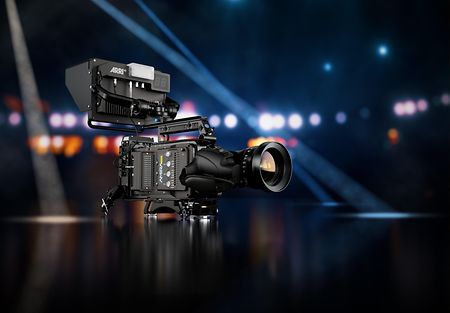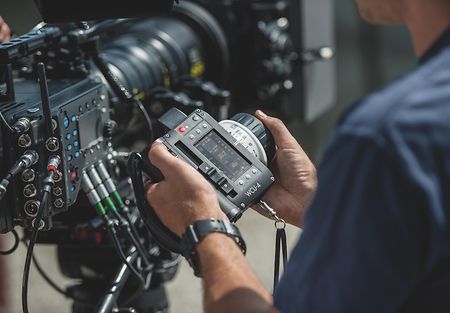With 90 million viewers and a setting at the heart of American culture, the Super Bowl Halftime Show has been called the biggest stage in the world. This year’s extravaganza, produced by Roc Nation, took place on February 7, 2021, in Tampa, Florida, with the cameras trained on Canadian pop superstar The Weeknd.
Behind the scenes, director Hamish Hamilton of Done and Dusted oversaw the production from a remote truck he describes as “quiet as a library” during the pressure-packed 12-minute spectacle. The halftime production is almost completely separate from the game coverage, which uses as many as 50 broadcast-quality cameras. Hamilton has directed the Halftime Show annually since 2010. Each year is different, he says. This time around, perhaps the most important difference was the decision Hamilton and his colleagues made to shoot mainly with large format cinema-quality cameras – in this case, eight ARRI ALEXA Minis and two ARRI AMIRAs. Hamilton says that the cinema-style, Super 35-gauge cameras opened many creative doors without adding workflow headaches or limitations.
The shoot was the very first-time full cinema-quality cameras were used on the Super Bowl event. Hamilton says that the results have a feeling of epic theatricality. “The camera technology played an integral part in the scene that was set,” he says. “More than ever before on our Super Bowl productions, the sensor became a critical part of telling the story.”
Hamilton has been looking for ways to bring cinema-quality digital cameras onto the Super Bowl for years, but in 2021, a number of factors came together to make it possible.
“With The Weeknd, we had an artist who could really benefit from a more cinematic aesthetic, changing the way a live concert would look to something more like his videos, and creating some looks that are slightly more extreme than a normal Super Bowl Halftime Show,” Hamilton says. “That all plays into the ARRI brand, and what those cameras are fantastic at doing. These sensors allow you to do so much more in terms of color, grading, depth of field, and textures. We were given a lot of options for larger format cameras, but we felt that the aesthetic of the sensor that ARRI has created gave us the best image.”
